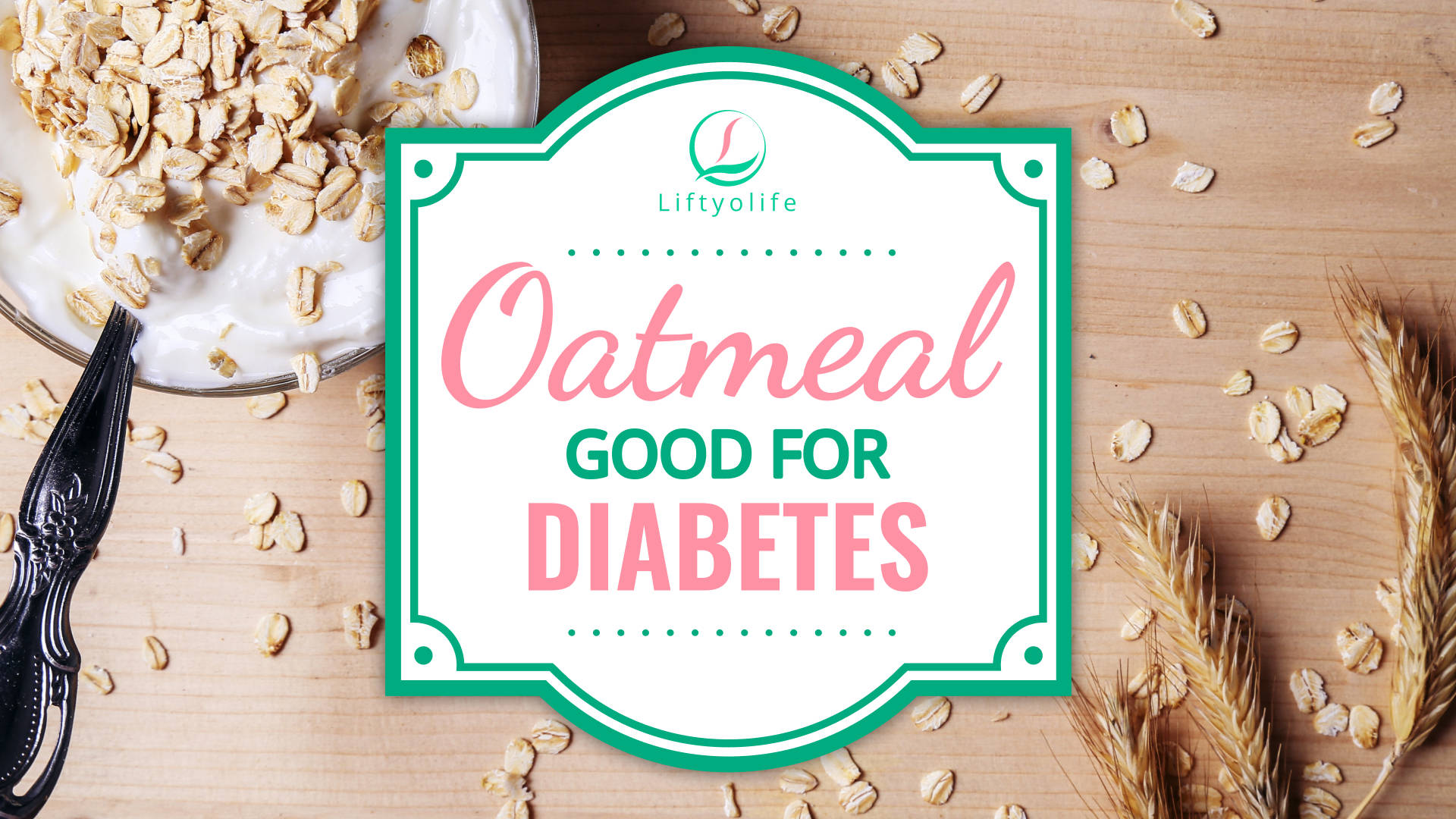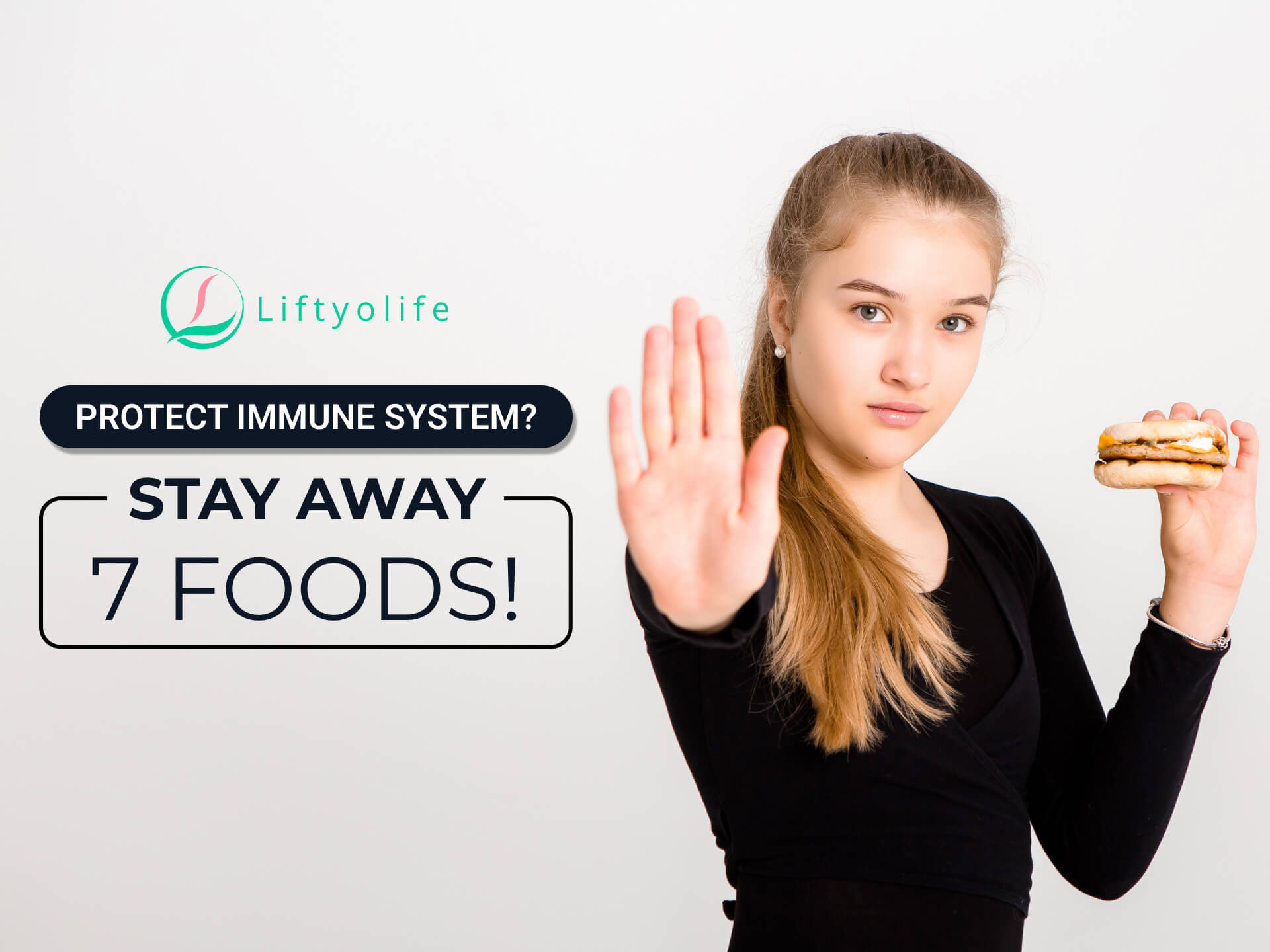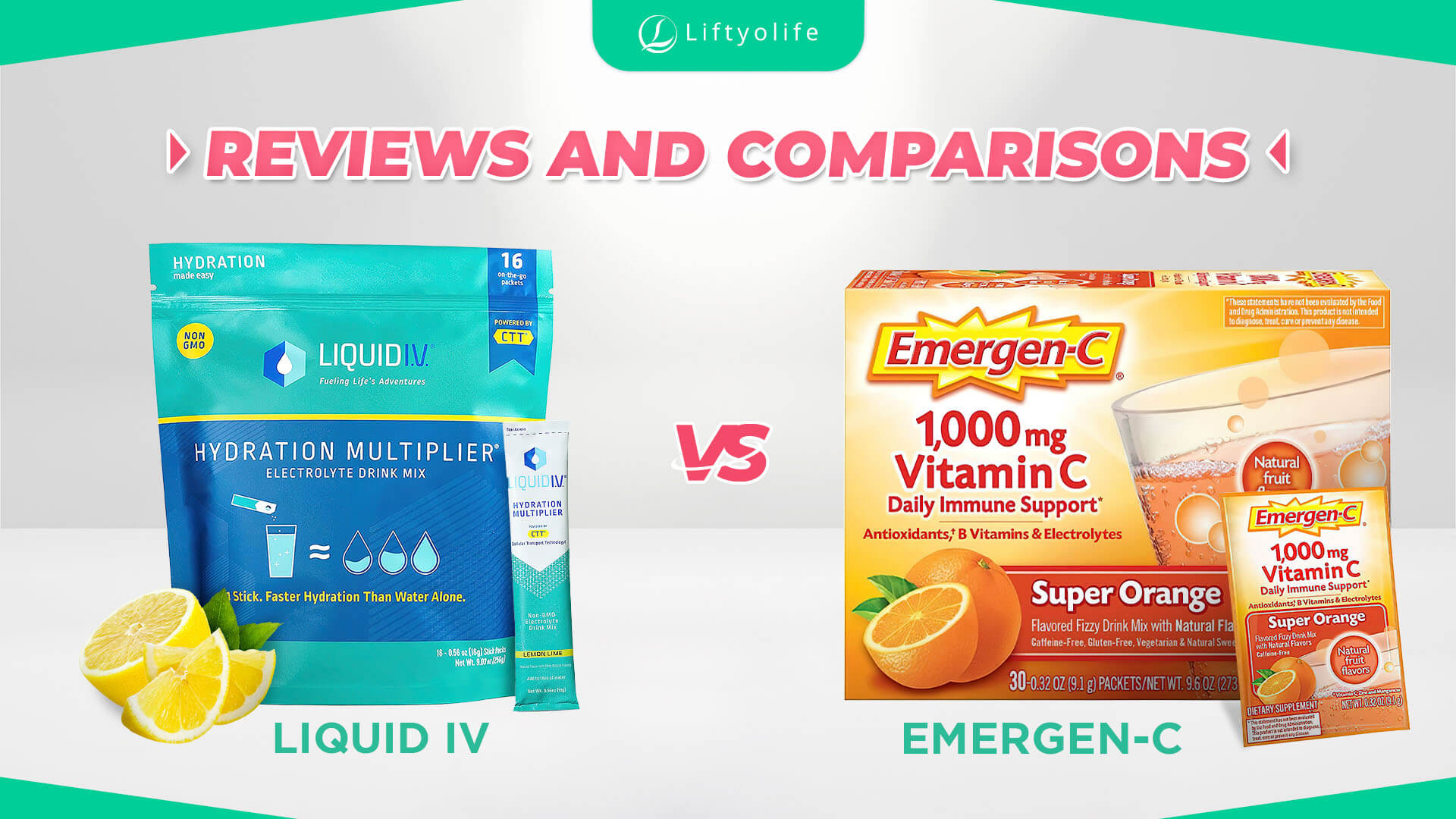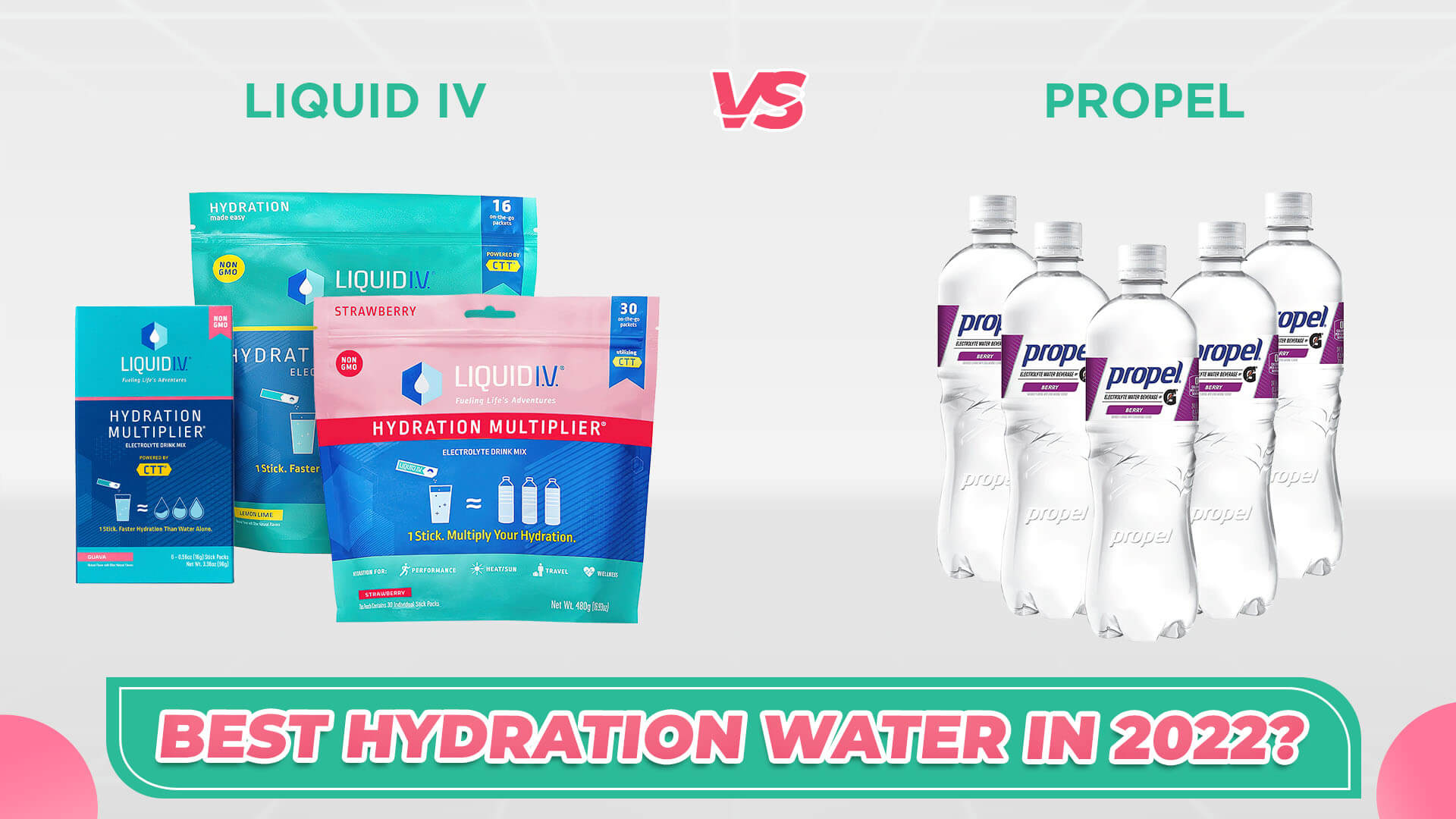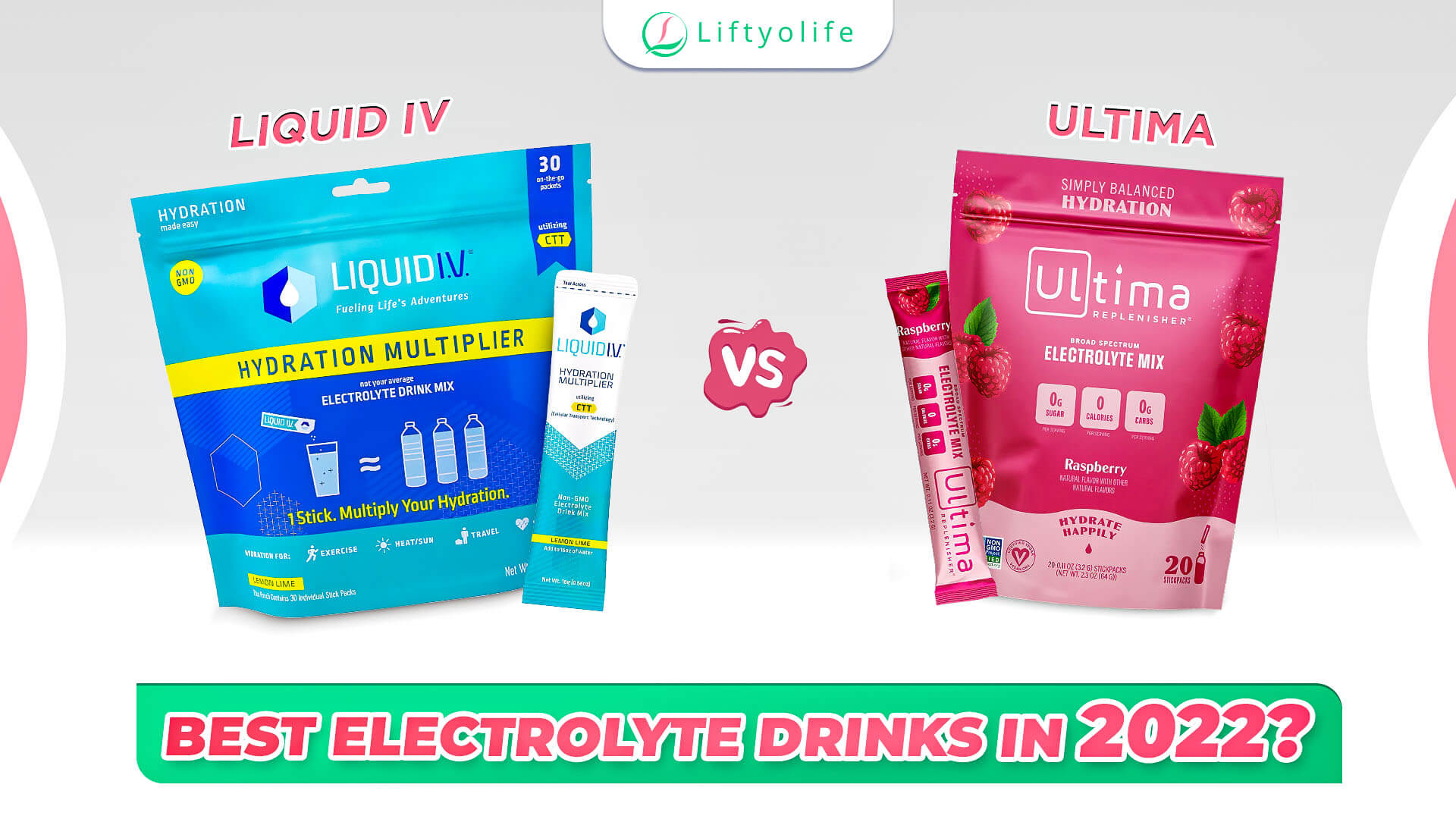Anti Cancer Diet – Foods Arrest The Spread Of This Big C
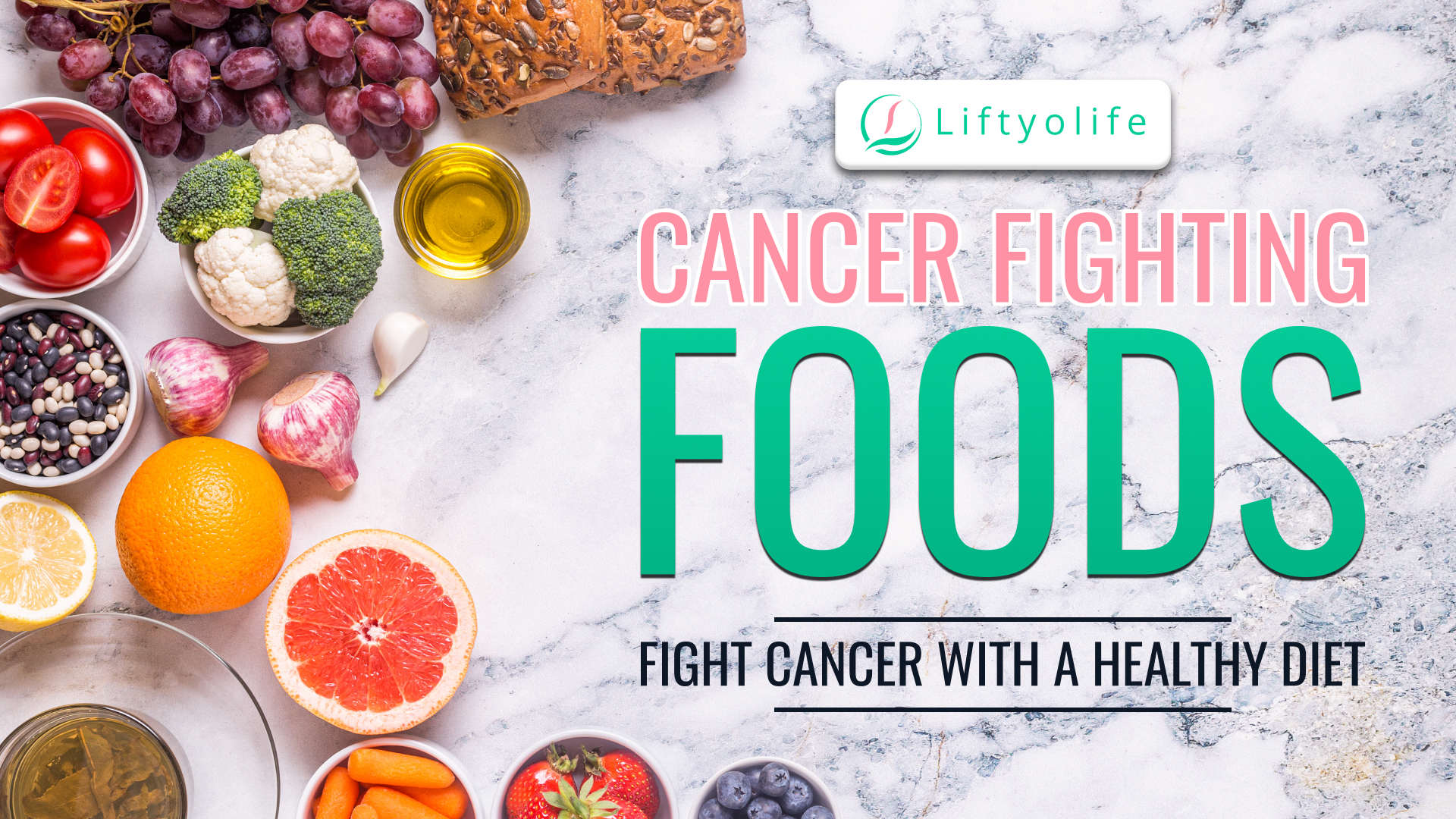
An anti cancer diet is an essential strategy for lowering your cancer risk. As research progresses, it is becoming clear that nutrition plays a significant role in cancer. What we eat and drink can have various effects on our health. Because no single food can protect you from cancer on its own, a clever combination can produce excellent masterpieces. Today, Liftyolife (liftyolife.com) brings them to you.
1. Dietary fat’s cancer connection
For many years, epidemiological studies have suggested that high-fat diets are associated with an increased risk of certain cancers. However, it is debatable whether the oncogenic properties of fat are associated with their quantity rather than their quality.
- Saturated fats
A high intake of saturated fat, animal fat, and meat has been linked to an increased risk of colorectal and breast cancer. However, a large cohort study found no link between meat consumption and an increased risk of pancreatic cancer.
Another prospective study discovered that saturated fat and butter consumption were strongly linked to an increased risk of pancreatic cancer.
Furthermore, a multiethnic cohort study found a 50% increase in pancreatic cancer risk with diets high in pork or total red meat, but no increased risk with diets high in poultry, fish, dairy products, eggs, saturated fat, or cholesterol.
According to current research, a high-fat diet causes an increase in bile acid production, which is then converted by intestinal bacteria into secondary bile acid and cytotoxic compounds. These compounds may increase ornithine decarboxylase, which is involved in cell division and thus increase the proliferative activity of the colonic epithelium. This has to do with cancer pathogenesis.
- Monounsaturated fatty acids
Olive oil is a common source of monounsaturated fatty acids. According to one study, consuming 8.8 g of olive oil per day was significantly associated with a lower risk of breast cancer.
Between 1992 and 2000, Galeone et al. discovered that olive oil might reduce colon cancer risk but not rectal cancer risk.
- n-3 and n-6 polyunsaturated fatty acids (n-3 PUFA)
Several studies have linked a high intake of n-6 fatty acids (such as corn and safflower oils) to a poor outcome in cancer patients. In contrast, a high intake of n-3 fatty acids (such as fish and flaxseed oils) has been linked to a favorable outcome.
n-3 PUFA may inhibit carcinogenesis through a molecular mechanism such as:
- increased or decreased production of free radicals and reactive oxygen species, which is thought to promote the adhesion of circulating tumor cells to the endothelium,
- influences transcription factor activity and signal transduction pathways,
- modify estrogen metabolism, insulin sensitivity, and membrane fluidity mechanisms.
n-6 PUFA, on the other hand, appears to be carcinogenic. However, conjugated linoleic acid (CLA), a naturally occurring n-6 fatty acid found primarily in ruminant meat and dairy products, has been shown in animal models of chemical carcinogenesis to protect against cancer and inhibit the proliferation of human cancer cell lines.
Summary, according to many studies, monounsaturated fat and n-3 PUFA may significantly impact cancer prevention or suppression. In contrast, saturated fat and n-6 PUFA may increase the risk of carcinogenesis.
2. Specific nutrients or foods with an anti-cancer connection
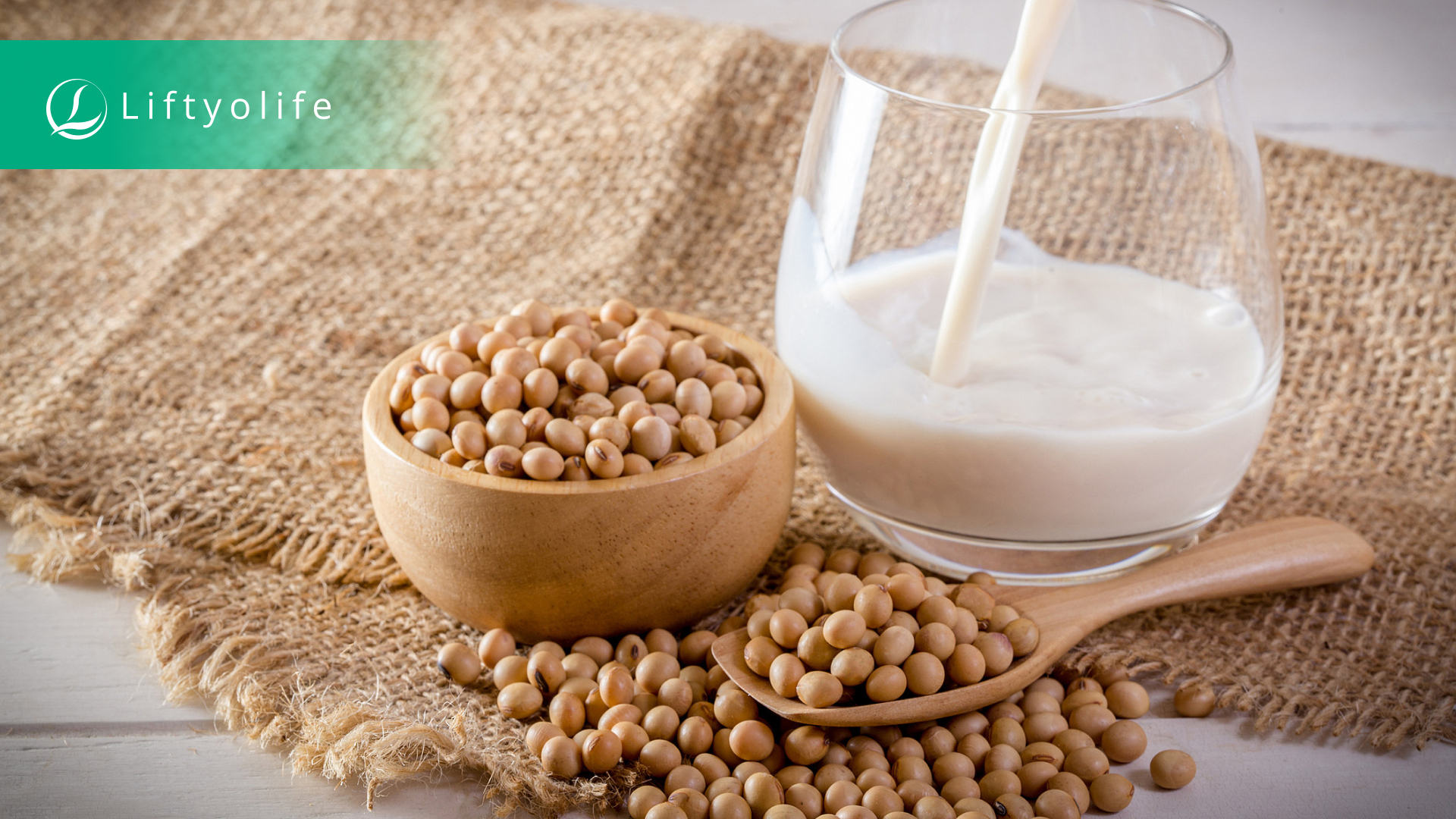
Specific nutrients or foods with an anti-cancer connection
- Soy
Many questions remain about breast cancer and soy, but current research may shed more light on the subject. Experts are increasingly suggesting that early soy exposure, such as during adolescence, may help protect women from developing breast cancer later in life.
However, soy products contain high-quality protein, adding soy to your diet has been shown to lower cholesterol. It may also help postmenopausal women avoid bone loss.
- Flaxseed
Ground flaxseeds have soluble fiber, alpha-linolenic acid (a type of healthy omega-3 fatty acid), and are the world’s richest source of lignans (phytoestrogens that act as antioxidants).
The study (presented in Dec 2000 at the San Antonio Breast Cancer Symposium) found that consuming a reasonable amount of flaxseed (25 grams of flaxseed) for approximately 38 days reduced tumor growth in people with breast cancer.
Furthermore, a recent study found that premenopausal women whose diets contained the most lignans were 34% less likely to thrive in breast cancer than women whose diets had the least lignans. (Whole grains, winter squash, strawberries, onions, cantaloupe, grapefruit, and carrots are also high in lignans.)
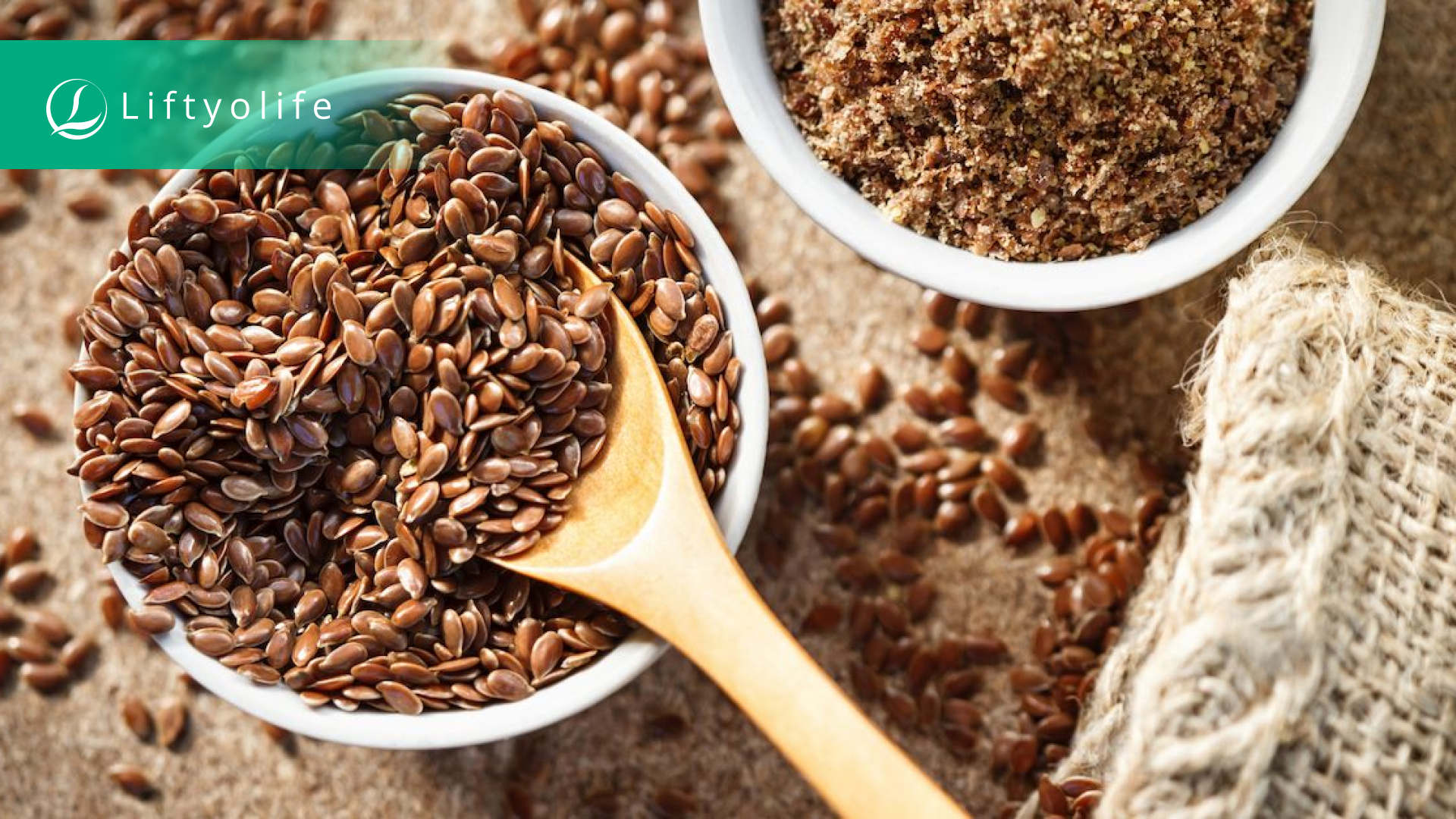
Flaxseed
3. Should it really be “10-a-day”?
Striving to eat 10 servings of fruits and vegetables per day (choosing carotene-rich produce, dark green vegetables, cruciferous vegetables, tomatoes, and citrus when possible) may help us live longer lives.
According to the Imperial College London study, such eating habits could prevent 7.8 million premature deaths each year.
A portion is defined as 80g (3oz) of fruit or vegetables, which is roughly the size of a small banana, a pear, or three heaping tablespoons of spinach or peas.
4. Eating-smart guidelines
- Aim for nine to ten servings (about 1/2 cup each) of fruits and vegetables per day. Include at least one cup of dark green vegetables and one cup of orange fruit or vegetable.
- Maintain a healthy weight by exercising almost every day (consult your doctor before beginning an exercise program) and avoiding excess fat and sugar.
- Add fish 2 to 3 times per week to your meal to replace high-fat meats and as a source of omega-3 fatty acids.
- Take in several servings of whole grains per day.
- Consume beans three times per week to replace red meat and as a source of folic acid (found in lentils and pinto beans), fiber, and various phytochemicals.
- Pick up lean meats and low-fat dairy products, and replace trans-fat-laden butter, lard, and margarine with canola and olive oil.
- Find satisfying substitutes for your favorite foods lower in calories, fat, and higher in nutrients such as fiber.
- Consume alcohol maximum of one drink per day. Even better, limit yourself to no more than three drinks per week. Also, make sure you’re getting enough folic acid from your diet.
5. Anti cancer diet: foods that prevent cancer
5.1. Vegetables
5.1.1. Cruciferous vegetables
Dark green, beans and peas (legumes), red and orange, starchy, and other vegetables are the five subgroups of vegetables. Cruciferous vegetables are classified as “dark-green vegetables” and “other vegetables.”
They may be especially effective cancer-fighting foods. Researchers discovered that the components in these vegetables could protect you from free radicals, which damage the DNA of your cells. Moreover, they may also keep you from cancer-causing chemicals, slow tumor growth, and encourage cancer cells to die. They’re a delicious and nutritious addition to your anti-cancer diet.
Furthermore, cruciferous vegetables are high in glucosinolates and their hydrolysis products, such as indoles and isothiocyanates. In some epidemiological studies, a high intake of cruciferous vegetables has been linked to a lower risk of lung and colorectal cancer.
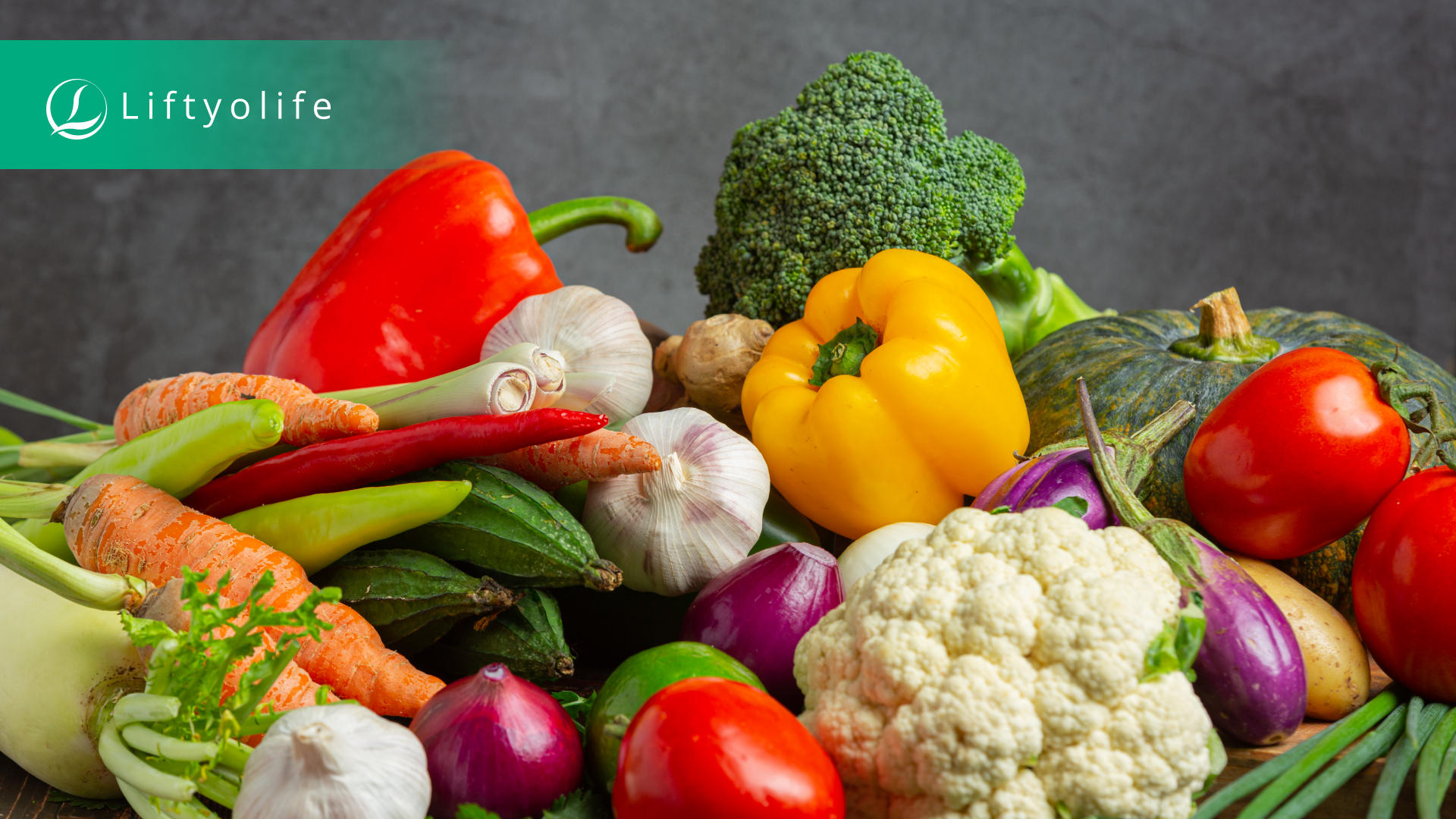
Cruciferous vegetables
5.1.2. Tomatoes
Tomatoes contain high in vitamins A, C, E, and the antioxidant lycopene. Lycopene helps prevent lung, prostate, and stomach cancers. By lowering bad cholesterol (LDL) and blood pressure, the potent antioxidant can also help reduce your risk of developing cardiovascular disease. Furthermore, there is evidence that increased lycopene intake can reduce cancers of the colon and rectum, pancreas, oral cavity, esophagus, breast, and cervix.
The juicy red fruit can protect your cells’ DNA from damage that can lead to cancer. Because your body may absorb lycopene better from processed tomato foods like sauce, whole-wheat pasta with marinara sauce could be a tasty way to get your dose of cancer-fighting lycopene.

Tomatoes
5.1.3. Garlic
Garlic consumption reduces the risk of colorectal cancer because allium compounds in garlic have anti-cancer activity. Garlic and its compounds can do this in various ways: Garlic compounds have been shown in lab studies to aid in DNA repair, slow cancer cell growth, and reduce inflammation.
Ingredients in these pungent bulbs may inhibit the action of cancer-causing substances in your body, or they may prevent cancer cells from multiplying. Experts don’t know how many cloves you should eat per day to prevent cancer, but a clove a day may be beneficial.
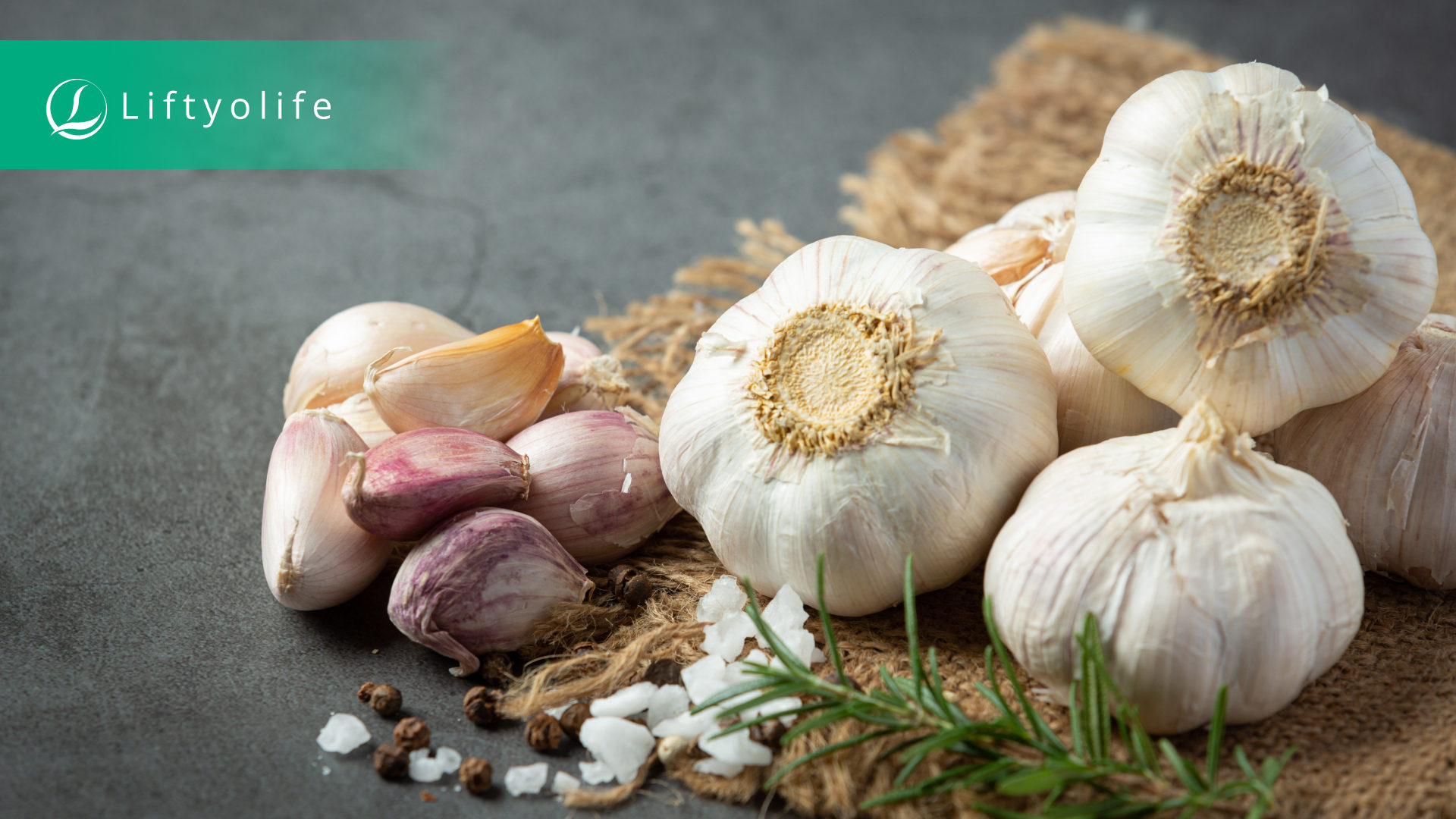
Garlic
5.1.4. Turmeric
This orange-colored spice contains curcumin, which may be beneficial in lowering cancer risk.
Curcumin consumption has been linked to lower rates of certain cancers in countries where people consume more spice. This is at curcumin levels of 100mg to 200mg per day for extended periods.
According to a few laboratory studies on cancer cells, curcumin has anti-cancer properties. It can kill cancer cells and prevent new ones from growing. It is most effective against breast cancer, bowel cancer, stomach cancer, and skin cancer cells.
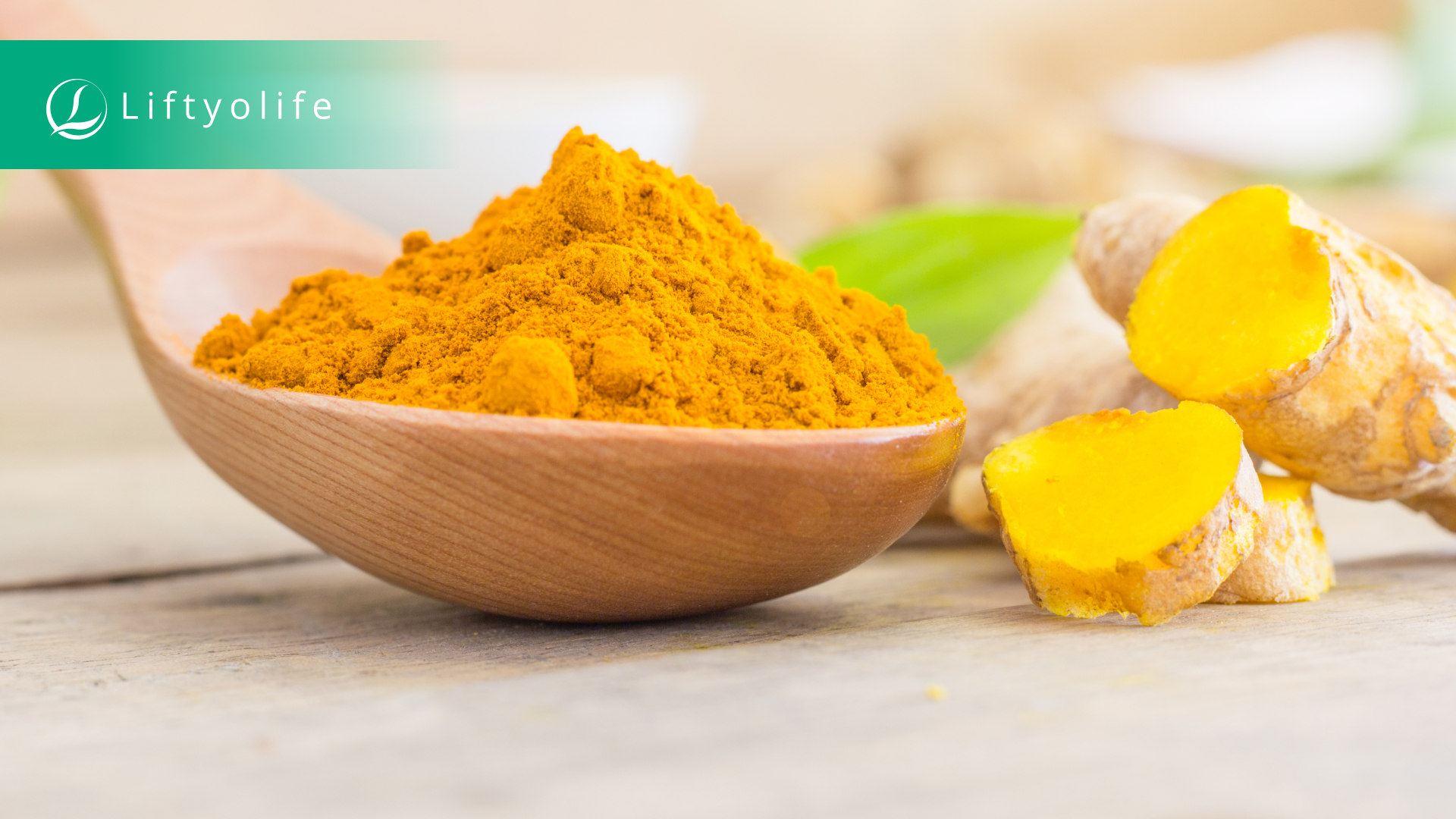
Turmeric
5.1.5. Leafy green vegetables
Leafy green vegetables like romaine lettuce and darker green leafy vegetables such as spinach, kale, collard greens, mustard greens, and turnip greens contain beta-carotene, its carotenoid cousins’ lutein and zeaxanthin. These ingredients like beta-carotene, lutein, and zeaxanthin are potent antioxidants that appear to play a role in cancer prevention in the early stages.
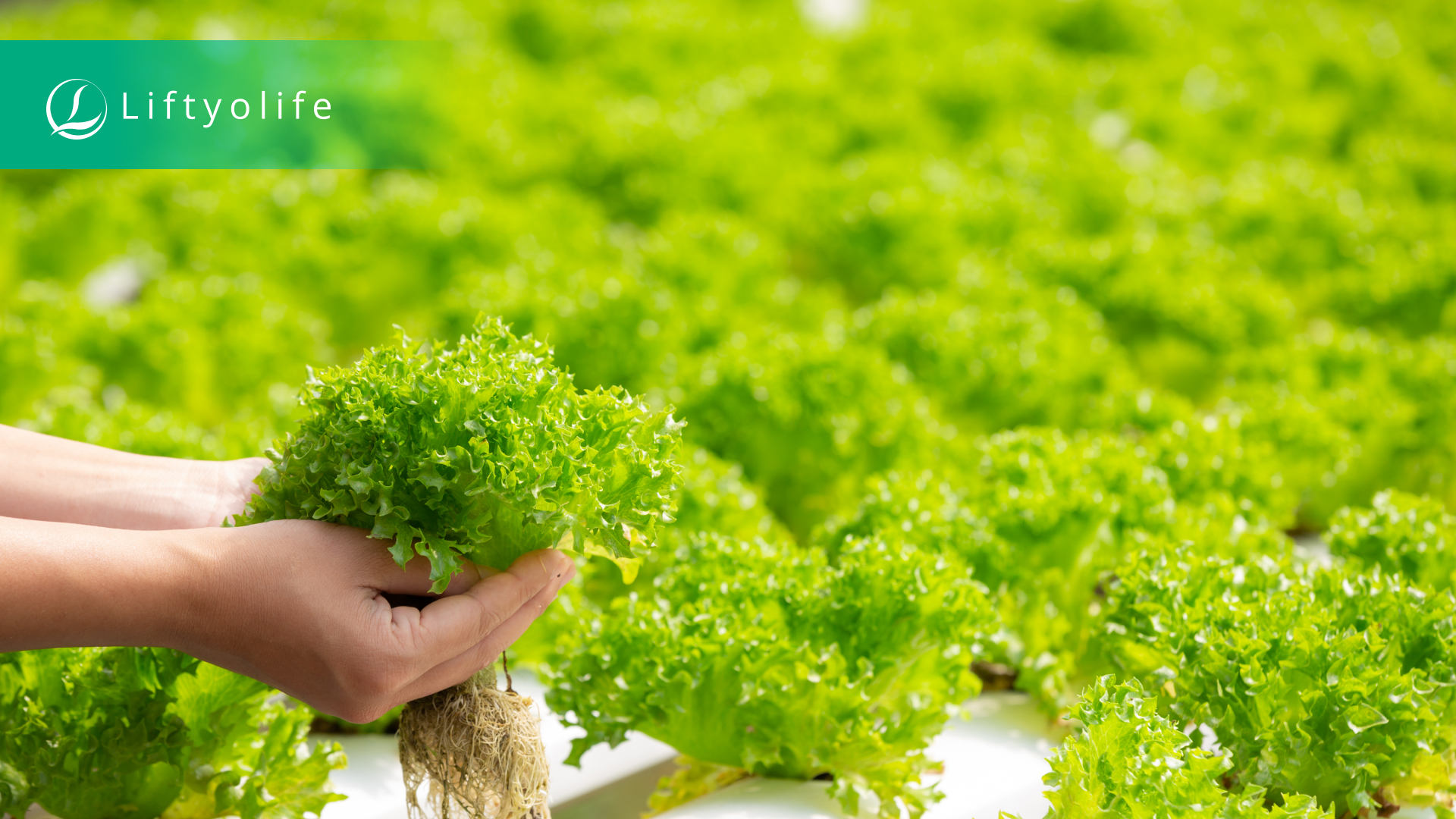
Leafy green vegetables
5.2. Whole grains
Whole grains include barley, oatmeal, brown rice, pasta, and whole-wheat bread. According to the American Institute for Cancer Research, whole grains contain many components to reduce your cancer risks, such as fiber and antioxidants. Furthermore, these grains can fight many types of cancer, particularly gastrointestinal cancers such as gastric and colonic cancers, as well as hormonally-dependent cancers such as breast and prostate cancer.
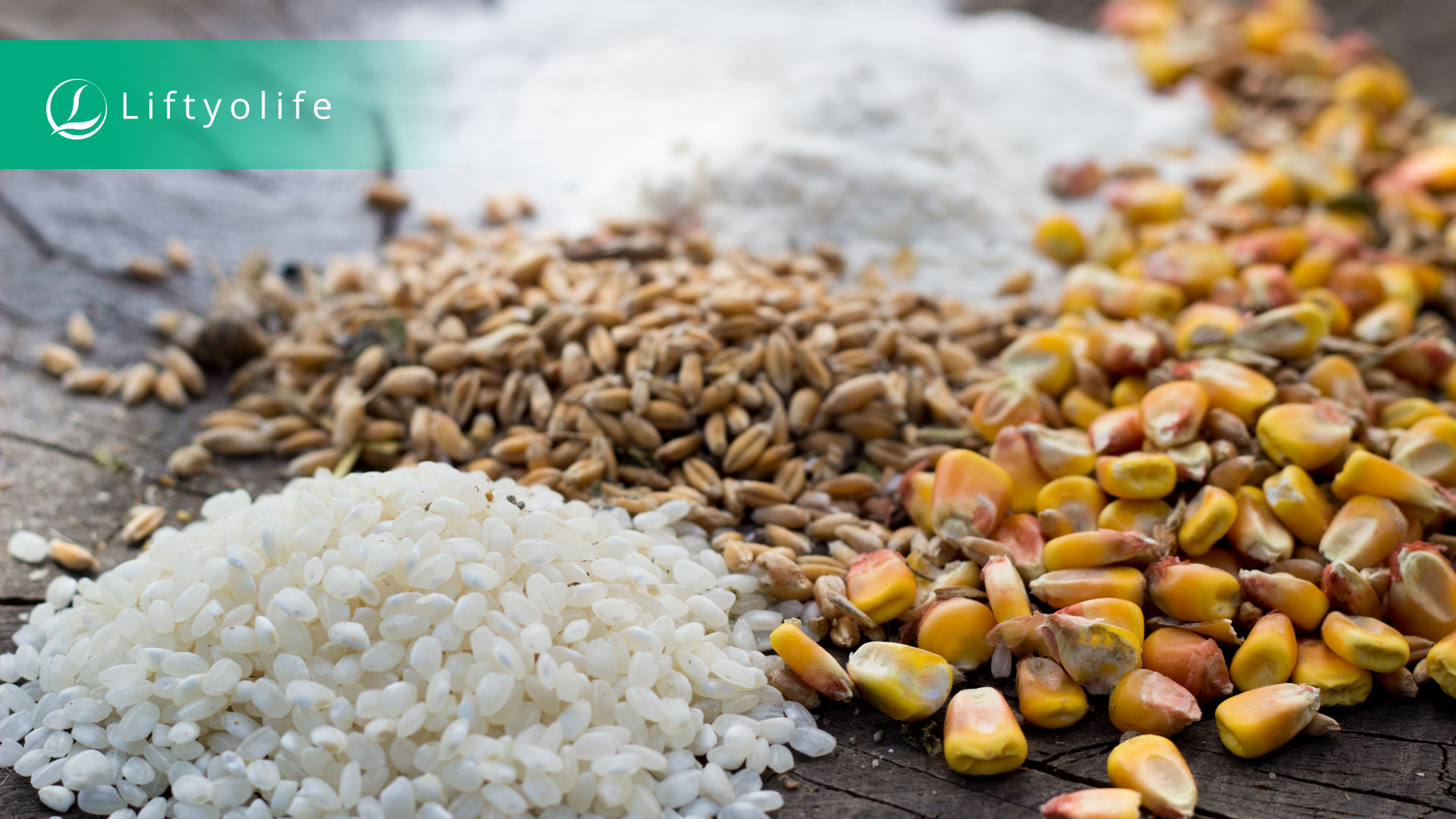
Whole grains
5.3. Fruits
5.3.1. Grapes
The effects of proanthocyanidin compounds derived from grape seeds and skins are being studied. Laboratory studies suggest that they, or the compounds produced by gut microbes, may influence the expression of genes associated with cancer development.
In addition, the skin of red grapes contains a high concentration of an antioxidant known as resveratrol. This antioxidant can also be found in grape juice and red wine. According to the National Cancer Institute, resveratrol may be helpful in preventing the onset or spread of cancer. According to laboratory studies, it inhibits the growth of many types of cancer cells.
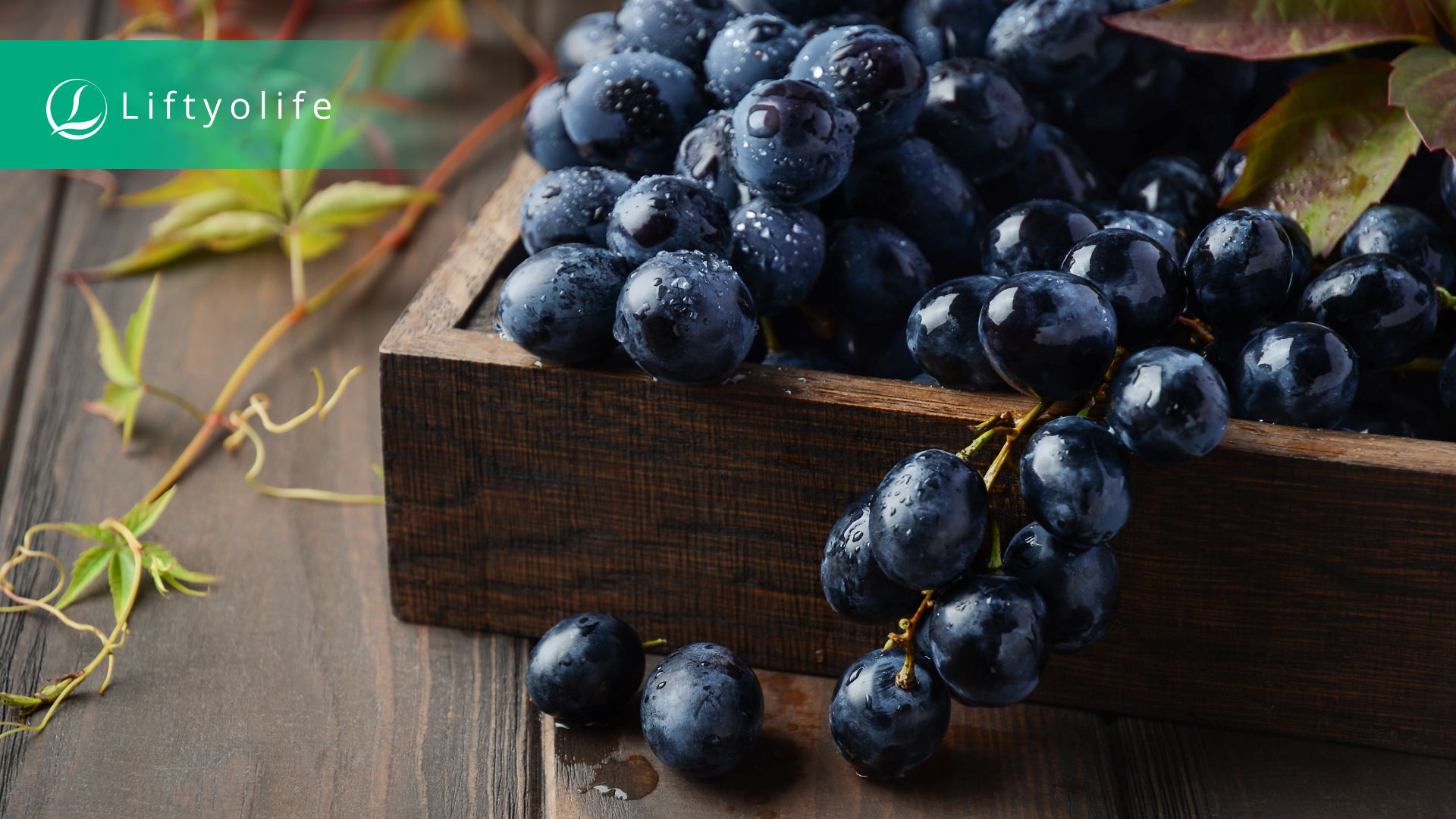
Grapes
5.3.2. Berries
Most berries are high in antioxidants, which means they can stop a naturally occurring process in the body that produces free radicals that can harm your cells. Studies have shown these antioxidants protect the body from cell damage that can lead to skin cancer cancers of the bladder, breast, lung, and esophagus. Moreover, compounds found in berries may aid in preventing cancer growth and spread.
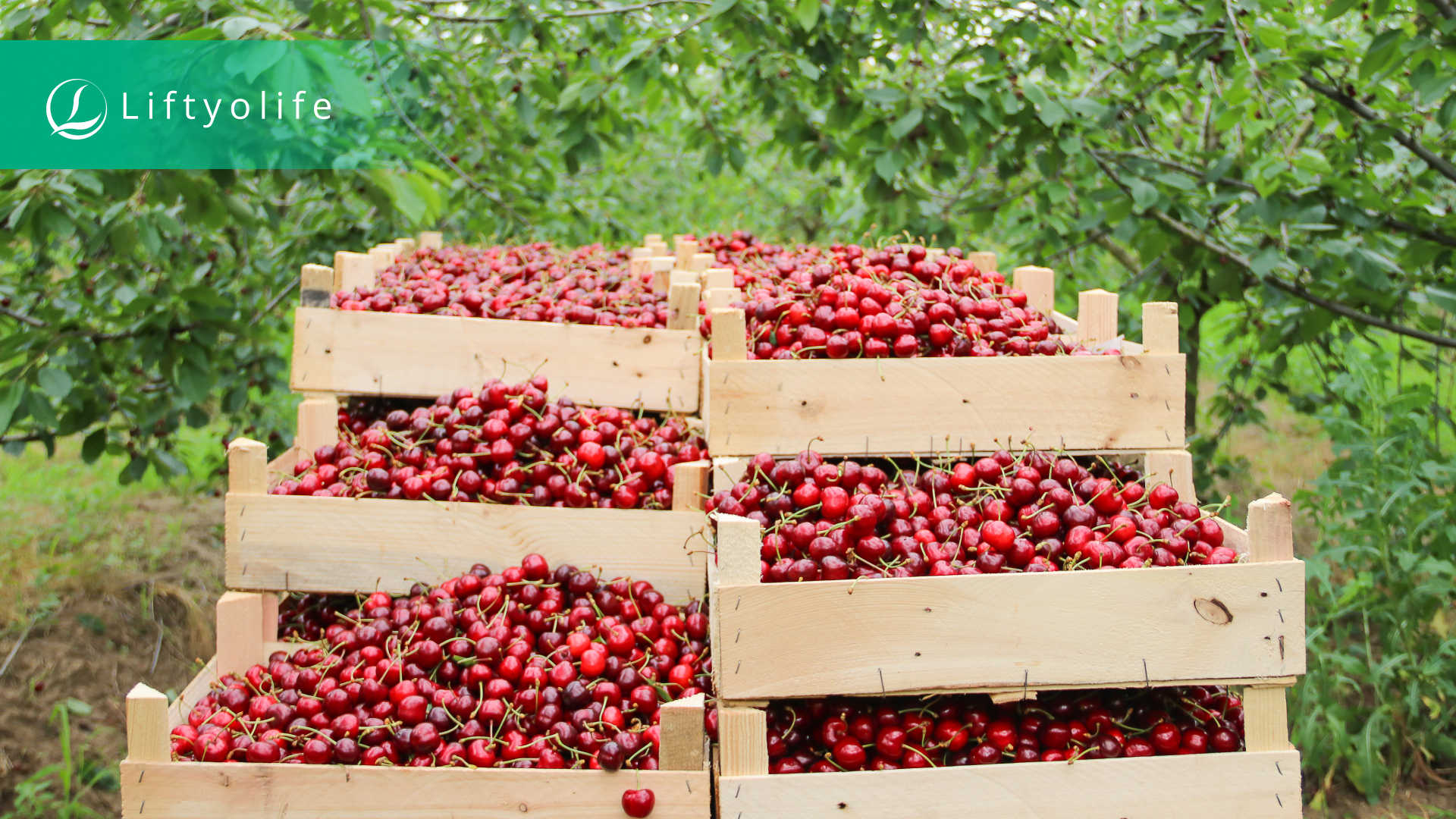
Berries
5.4 Legumes
5.4.1. Beans
Beans are a natural source of phytochemicals and antioxidants, and studies show that eating beans frequently may cut down the risk of certain types of cancer. Beans’ unique fiber composition and essential micronutrients and antioxidants make them a vital food choice for various reasons, including their potential anti-cancer properties for certain types of cancer, such as colorectal, breast, and prostate cancer.

Beans
5.5. Green tea
The predominant polyphenols in green tea, EGCG, ECG, EGC, and EC, have antioxidant activity among their many biological activities. These compounds, particularly EGCG and ECG, have significant free radical scavenging action and may keep cells from DNA damage by reactive oxygen species.
In laboratory and animal studies, tea catechins have also been shown to inhibit angiogenesis and tumor cell invasiveness. Furthermore, tea polyphenols may protect against UVB radiation damage and modulate immune system function. Green teas have also been shown to activate detoxification enzymes like glutathione S-transferase and quinone reductase, which may help protect against tumor development.
Catechins are found in green and black teas, but green tea contains more antioxidants.

Green tea
6. Anti cancer recipes
6.1. Broccoli parmesan pasta
Yield: 2 servings.
Nutrition in one serving: 300 calories, 11.5 grams of protein, 47 grams of carbohydrates, 8.5 grams of fat (1.5 grams of saturated fat, 5.1 grams of monounsaturated fat, and 1.2 grams of polyunsaturated fat), 2 milligrams of cholesterol, 6 grams of fiber, and 59 milligrams of sodium per serving. Fat calories account for 25% of total calories.
Ingredients:
- 1 cup broccoli florets,
- 2 cups cooked angel hair pasta (or other cooked pasta),
- 1/8 cup shredded Parmesan cheese,
- 1 tablespoon olive oil,
- 1 teaspoon minced garlic,
- Salt,
- Pepper,
- Small bunch of fresh chopped parsley.
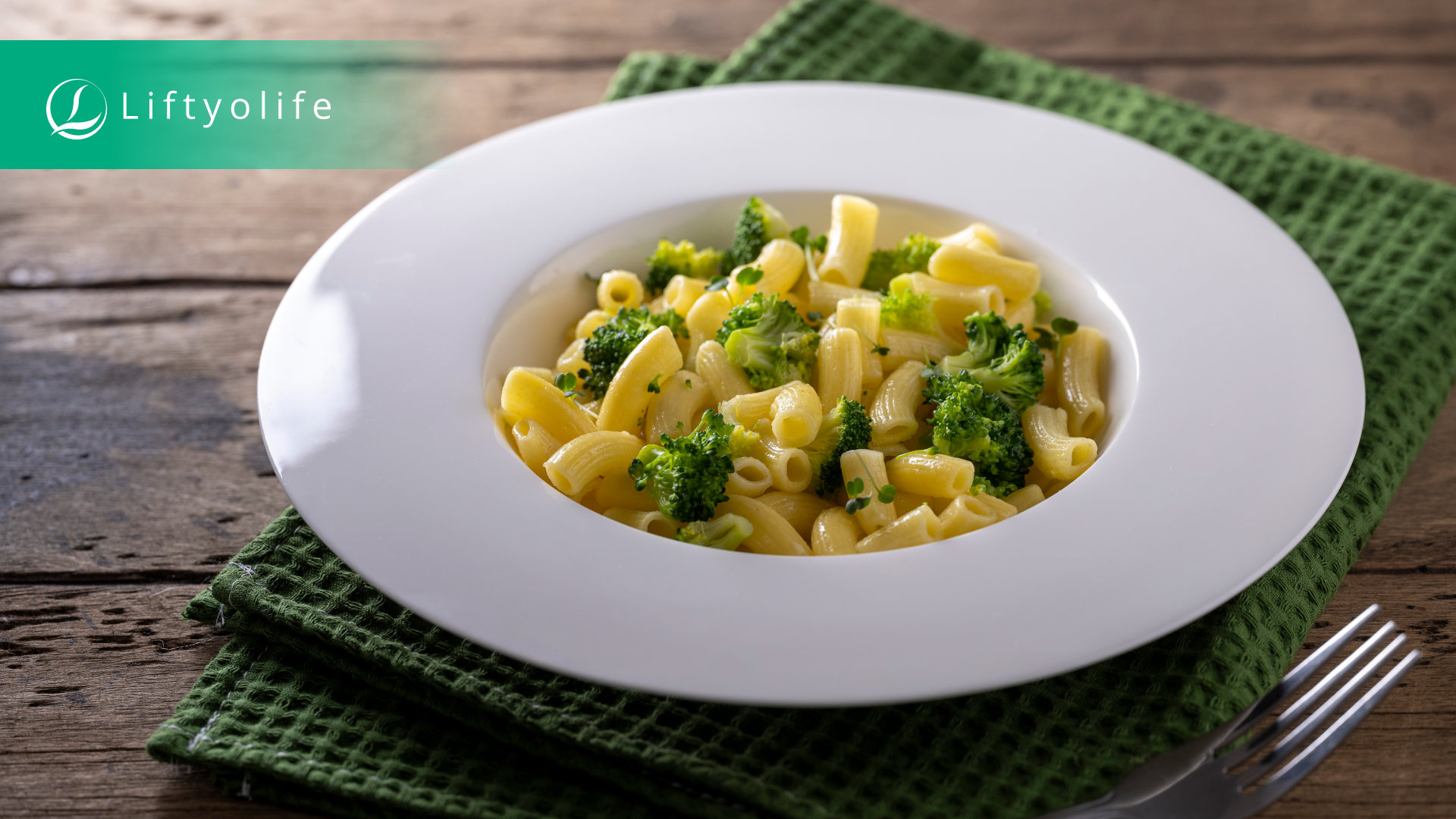
Broccoli parmesan pasta
Instructions:
- Step 1: Make small florets out of the broccoli. Place them in a colander, then pour over boiling water, followed by cold water. Place aside.
- Step 2: Heat the oil over medium heat in a nonstick skillet. Cook, frequently stirring, until the garlic is lightly golden (about 1-2 minutes).
- Step 3: Add the broccoli and pasta for 2-3 minutes, occasionally stirring—season with salt and pepper flakes.
- Step 4: Lower the heat to low and sprinkle with Parmesan cheese and fresh parsley on top.
- Step 5: Serve with a good stir.
6.2. Chicken with spinach and apple recipe
Ingredients:
- 4 (4-oz.) skinless, boneless chicken breasts,
- 8 cups packed fresh baby spinach,
- 2 tbsp. olive oil,
- 2/3 cup apple cider,
- 2 large cloves garlic, minced
- 1 tsp. spicy brown mustard,
- 1 medium red apple, sliced 1/8-inch lengthwise,
- salt and freshly ground pepper,
- 1 medium granny smith apple, cut 1/8-inch lengthwise.

Chicken with spinach and apple recipe
Instructions:
- Step 1: Heat the oil in a large skillet over medium-high heat—season in the chicken with salt and pepper.
- Step 2: Sear the chicken for 6-7 minutes on each side, or until browned. Then, remove the chicken and let it sit for a few minutes. Cover and set it aside to keep the chicken warm after cutting it into 1-inch pieces.
- Step 3: Stir together the garlic, mustard, and cider in a skillet. Lower the heat to medium and add the apple slices. Allow simmering for 5-6 minutes, stirring frequently.
- Step 4: Take back the chicken to the skillet. As the sauce thickens, stir it occasionally for about 4-5 minutes. Toss the spinach into the skillet. Stir for 2 minutes or until the spinach is wilted.
- Step 5: Serve hot.
6.3. Raw veggies & hummus platter (chickpea and garlic spread)
Ingredients:
- 1/4-1/2 teaspoon salt,
- 3 tablespoons low-fat plain yogurt,
- 3 tablespoons chopped red bell pepper,
- 1 teaspoon minced garlic,
- 15-ounce garbanzo beans,
- 1/4 cup tahini paste,
- 4 tablespoons fresh lemon juice,
- 4 green onions, chopped, separate the white and green parts,
- 1 tablespoon chopped fresh parsley,
- pepper.
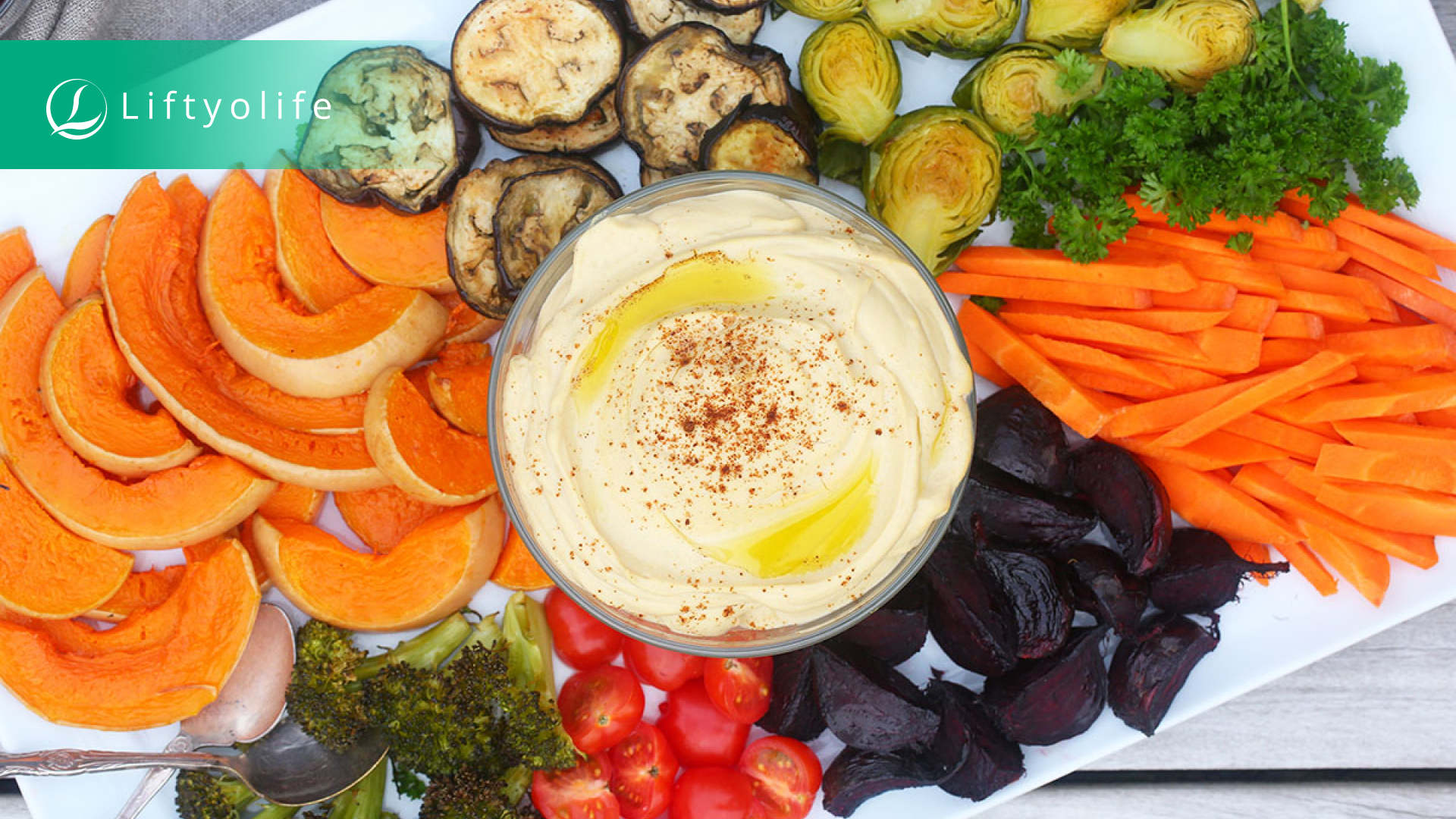
Raw veggies & hummus platter (chickpea and garlic spread)
Assorted vegetables:
- 2 cups florets broccoli (raw, or lightly cooked then cooled),
- 2 cups green beans (lightly boiled and cooled) or raw snap peas,
- 2 cups florets of cauliflower (raw or lightly cooked then cooled).
Instructions:
- Step 1: Rinse and drain the garbanzo beans in a colander. Place them in a food processor and process until smooth. Combine the garlic, salt to taste, tahini, yogurt, lemon juice, and parsley in a mixing bowl.
- Step 2: In that food processor, pulse the mixture until smooth, scraping down the sides with a spatula as needed. Spoon into a bowl and top with red bell pepper and green onions.
- Step 3: Make a platter by placing the hummus bowl in the center of a large plate. Organize the vegetables in a circle around that bowl.
- Step 4: Serve.
The concept of an anti-cancer diet is becoming a craze these days, as people seek ways to either prevent or fight the disease. Ongoing research into cancer-fighting foods is underway. So, what’s the point of continuing to wait? Begin today by changing your small eating habits to save you from this deadly disease. Don’t forget to subscribe to Liftyolife (liftyolife.com) for more reliable health information.
==> Read More:

